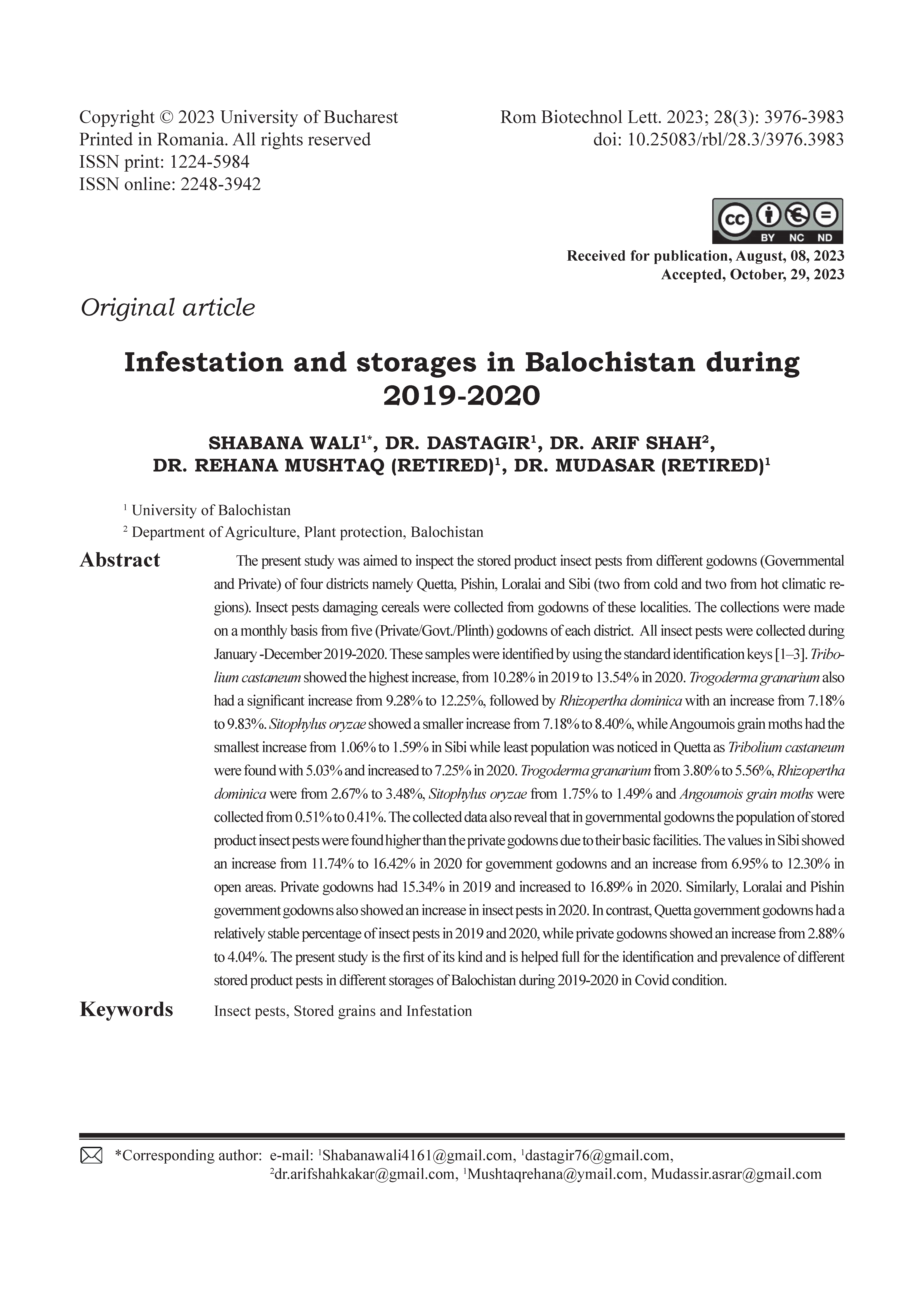Infestation and storages in Balochistan during 2019-2020
DOI:
https://doi.org/10.25083/rbl/28.3/3976.3983Keywords:
Insect pests, Stored grains, InfestationAbstract
The present study was aimed to inspect the stored product insect pests from different godowns (Governmental and Private) of four districts namely Quetta, Pishin, Loralai and Sibi (two from cold and two from hot climatic regions). Insect pests damaging cereals were collected from godowns of these localities. The collections were made on a monthly basis from five (Private/Govt./Plinth) godowns of each district. All insect pests were collected during January -December 2019-2020. These samples were identified by using the standard identification keys [1–3]. Tribolium castaneum showed the highest increase, from 10.28% in 2019 to 13.54% in 2020. Trogoderma granarium also had a significant increase from 9.28% to 12.25%, followed by Rhizopertha dominica with an increase from 7.18% to 9.83%. Sitophylus oryzae showed a smaller increase from 7.18% to 8.40%, while Angoumois grain moths had the smallest increase from 1.06% to 1.59% in Sibi while least population was noticed in Quetta as Tribolium castaneum were found with 5.03% and increased to 7.25% in 2020. Trogoderma granarium from 3.80% to 5.56%, Rhizopertha dominica were from 2.67% to 3.48%, Sitophylus oryzae from 1.75% to 1.49% and Angoumois grain moths were collected from 0.51% to 0.41%. The collected data also reveal that in governmental godowns the population of stored product insect pests were found higher than the private godowns due to their basic facilities. The values in Sibi showed an increase from 11.74% to 16.42% in 2020 for government godowns and an increase from 6.95% to 12.30% in open areas. Private godowns had 15.34% in 2019 and increased to 16.89% in 2020. Similarly, Loralai and Pishin government godowns also showed an increase in insect pests in 2020. In contrast, Quetta government godowns had a relatively stable percentage of insect pests in 2019 and 2020, while private godowns showed an increase from 2.88% to 4.04%. The present study is the first of its kind and is helped full for the identification and prevalence of different stored product pests in different storages of Balochistan during 2019-2020 in Covid condition.





